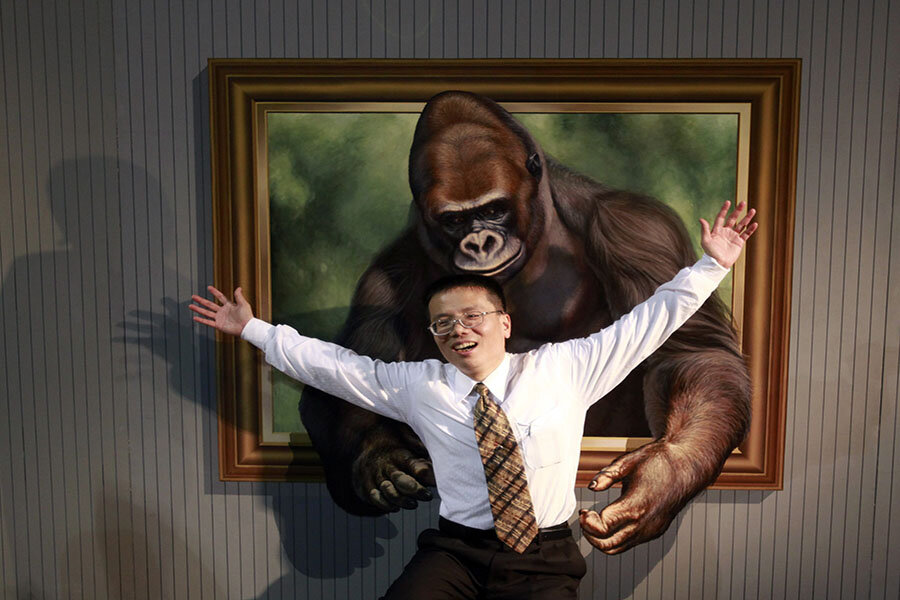Scientists solve optical illusion that baffled Galileo
Loading...
Have you ever looked at the night sky full of stars and wondered why the stars sometimes look blurry? No, it's not a trick of the eye. It's a trick of the brain.
A study titled "Neuronal nonlinearity explains greater visual spatial resolution for darks and lights," published Monday in Proceedings of the National Academy of Sciences (PNAS), a multidisciplinary scientific journal, offers the first physiological explanation of this age-old optical illusion.
Study co-author Jose-Manuel Alonso, a neuroscientist at the State University of New York's College of Optometry, says that there are many factors that can contribute to the optical fuzziness, but the neurons definitely seem to be one of them. The neurons that are sensitive to light are called the "ON" neurons, and they cause the blurriness, Dr. Alonso told the Monitor.
By studying the brain cells that are responsible for processing visual information, neuroscientists have discovered that neural response for dark stimuli (where the stimuli is darker than the background, for example – dark letters on a white page) result in a more accurate representation of the shape and size of the stimuli compared to neural response to a light stimuli (where the stimuli is lighter than the background, such as stars against the night sky) which cause "non-linear and exaggerated responses that make the stimulus look larger."
This is why Venus appear larger than Jupiter to the naked eye.
This illusion was first discovered by Galileo Galilei, when he observed a "size illusion" while observing Venus, which had a "radiant crown" when observed without a telescope.
This "radiant crown" made Venus look eight to ten times larger than Jupiter, even though in reality Jupiter should have appeared four times larger than Venus to Galileo at the time.
Galileo mused, "Either because their light is refracted in the moisture that covers the pupil, or because it is reflected from the edges of the eyelids and these reflected rays are diffused over the pupil, or for some other reason."
In addition to explaining why white spots on a black background look bigger than same-sized black spots on white background, "this effect is responsible for how we see everything from textures and faces— based on their dark parts in bright daylight — to why it is easier to read this very page with black-on-white lettering, rather than white-on-black (a well known, and until now, unexplained phenomenon)," according to a press release from SUNY.








